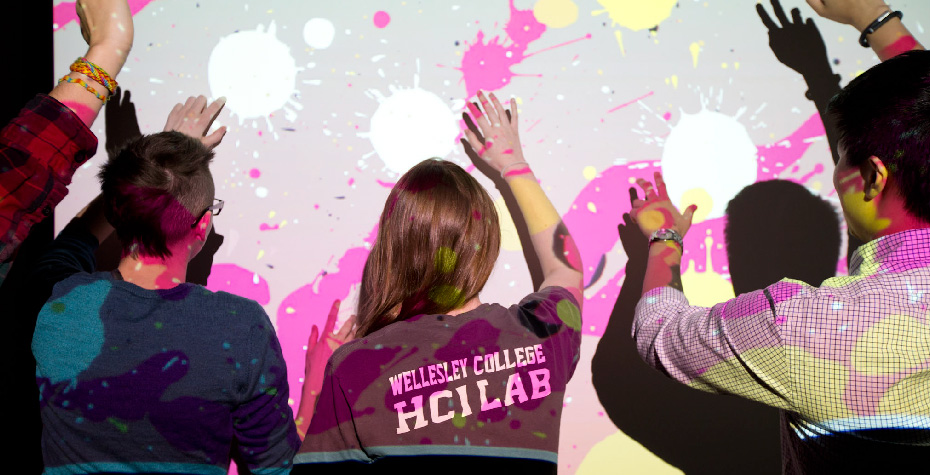Wellesley’s Computer Science Department Celebrates 32 Years of Innovation

In 1982, most Americans might have agreed with Ken Olsen, co-founder and CEO of Digital Equipment Corp., who’d famously said five years earlier, “There is no reason for any individual to have a computer in his home.”
Wellesley College did not share that view. Ann Congleton, professor emerita of philosophy, understood the tremendous potential of computer science and was instrumental in bringing computing to the College in the late 1960s. The first computer science course, “Extradepartmental 110: Introduction to Automatic Computing,” was taught in 1968 by two members of the MIT faculty.
By 1981-82, Wellesley offered five CS courses; 511 students were enrolled in them. In 1982-83, the College established the Department of Computer Science and the CS major. Ten courses were offered that year; 643 students signed up. “Our [department’s] founders understood the need for talented women to help shape computer science, and we’ve developed an effective program that provides the support and training our students need to excel in computing careers,” says Ellen C. Hildreth, professor of computer science and the department’s chair.
Now, as the department marks its 32nd year, Wellesley is again leading the way, at a time when “tech companies themselves are often hungry for more female applicants,” according to a recent story in the Boston Globe.
As Hildreth told the paper, Wellesley empowers women by breaking down any barriers based on gender that might impede them from entering the male-dominated field. “[The students] grow up in an environment where women are playing leadership roles and are being very engaged in all aspects,” she said. That extends to non-majors, for whom the CS department provides a variety of introductory courses that appeal to students across multiple disciplines.
In early March, 30 CS alums returned to campus to help celebrate the department’s 32nd anniversary. A timeline featured milestones in the department’s history, such as CS111 switching to Java in 1997, the first bi-annual Cirque du CS in 2005 (a celebration of student work in CS and MAS, with a festive circus theme), and the renovation of the HCI Lab in 2013.
Speakers included Randy Shull, professor of computer science, who recounted the early history of computing at Wellesley, and Eric Roberts, now a professor at Stanford University, who reflected on his experience as the first chair of Wellesley’s CS department. CS alums shared fun memories in a talk show hosted by P. Takis Metaxas, professor of computer science, and Orit Shaer, Clare Booth Luce Assistant Professor of Computer Science, offered a vision of the future of computing at Wellesley. That future, she said, will augment humans’ ability to process information, to connect, and to turn data into insights, helping users learn from large data sets and find efficient solutions to difficult computational problems. The potential applications are endless, she explained, from combating disease and ensuring environmental stability, to eradicating extreme hunger and poverty and promoting gender equality.
As the department looks toward its next 32 years (32 is a power of two, and powers of two are important in computer science), faculty members understand that the grand challenges of the future will require more than just technical knowledge of computing. They will require a broad interdisciplinary perspective and general skills that are at the core of a liberal arts education.
“I am excited by our ability to quickly adapt our curriculum to new important areas of CS and emerging technologies,” Hildreth says. “I am also excited by the many strong interdisciplinary connections that we have made, for example, to neuroscience, cognitive science, biology, engineering, and the arts. This interdisciplinary perspective and these broader skills will continue to empower Wellesley students to contribute to or change the field of computer science.”

